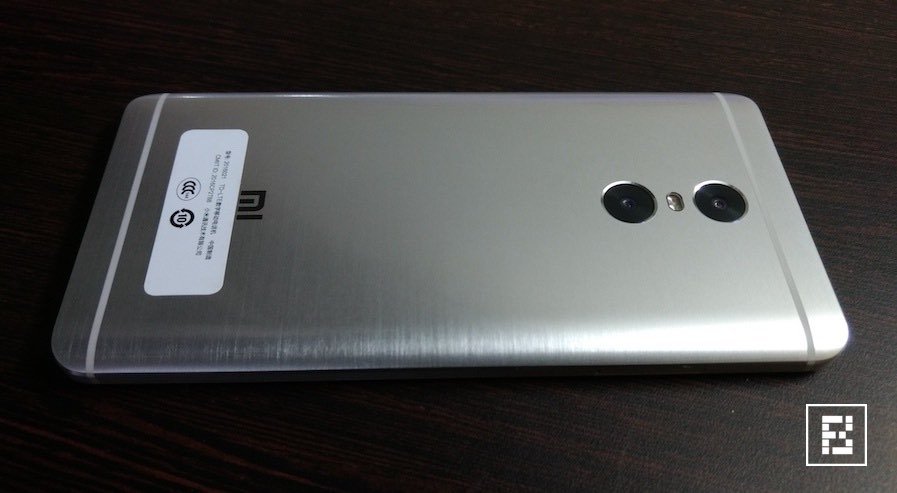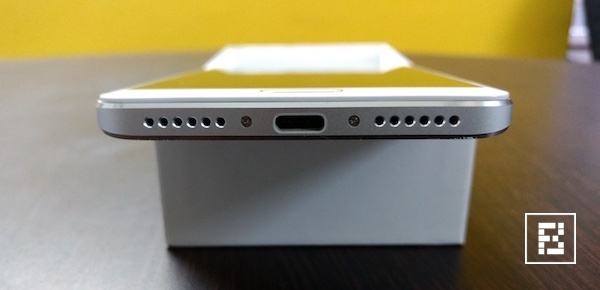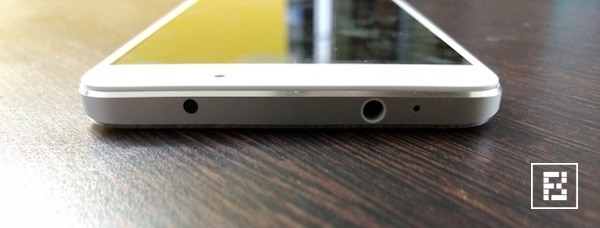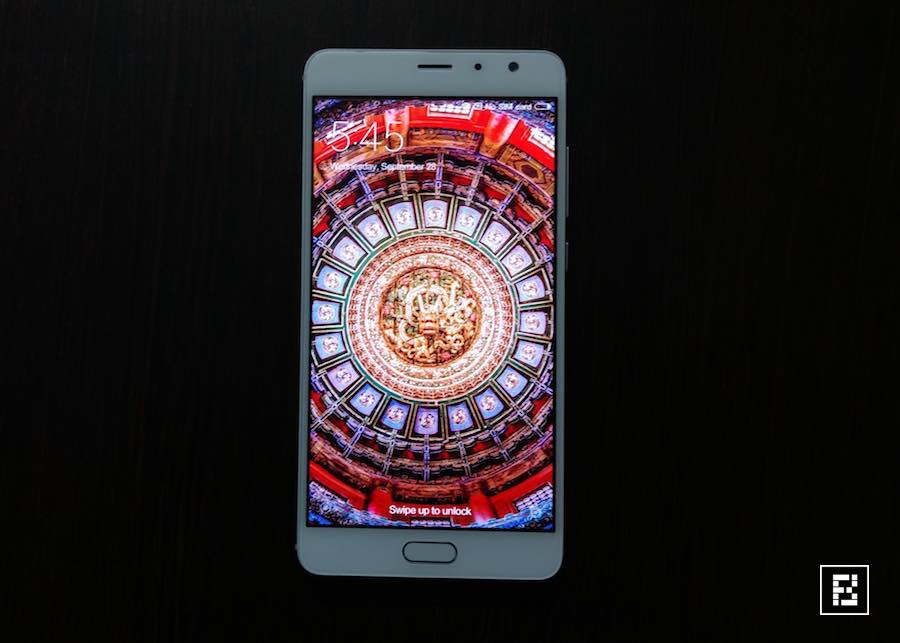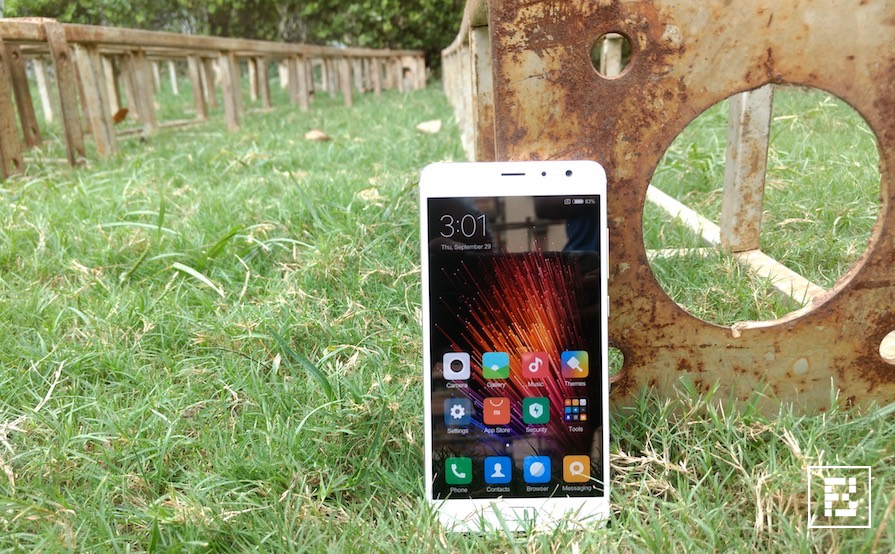 Short Bytes: Redmi Pro is Xiaomi’s new offering in the Chinese smartphone market. It tries to bring premium features like an OLED screen and dual-camera to the affordable Redmi segment. The phone struggles in few areas but its big battery, great screen, and swift performance is worth noting.
Short Bytes: Redmi Pro is Xiaomi’s new offering in the Chinese smartphone market. It tries to bring premium features like an OLED screen and dual-camera to the affordable Redmi segment. The phone struggles in few areas but its big battery, great screen, and swift performance is worth noting.
Xiaomi’s new offering Redmi Pro breaks this mold by bringing along some beastly specifications that are supposed to be offered by the Mi range. Launched back in July, surprisingly, it’s one of the least talked Xiaomi devices.
Before digging deep and discussing its features, including the most talked about dual-camera, let’s give you a rough idea of what’s ahead with the help of basic specifications of Redmi Pro.
Xiaomi Redmi Pro Configuration:
| Manufacturer | Xiaomi |
| Model | Redmi Pro |
| Network | 2G bands: GSM 850 / 900 / 1800 / 1900 – SIM 1 & SIM 2 CDMA 800 / 1900 3G bands: HSDPA 850 / 900 / 1900 / 2100 CDMA2000 1xEV-DO TD-SCDMA 4G bands: LTE band 1(2100), 3(1800), 5(850), 7(2600), 8(900), 38(2600), 39(1900), 40(2300), 41(2500) Speed: HSPA, LTE GPRS: Yes EDGE: Yes |
| Dimensions | 151.5 x 76.2 x 8.2 mm (5.96 x 3.00 x 0.32 in) |
| Weight | 174 g (6.14 oz) |
| SIM | Dual SIM (Nano-SIM/ Micro-SIM, dual stand-by) |
| Display type | OLED capacitive touchscreen, 16M colors |
| Size | 5.5 inches |
| Resolution | 1080 x 1920 pixels (~401 ppi pixel density) |
| OS | MIUI 8.0 (based on Android 6.0 Marshmallow) |
| Chipset | Mediatek MT6797T Helio X25 |
| CPU | Deca-core 2.3 GHz |
| GPU | 700MHz Mali-T880 MP4 |
| RAM | 3GB |
| Memory | 64GB |
| Card slot | microSD, up to 128 GB (uses SIM 2 slot) |
| Primary camera | Dual 13 MP + 5 MP, f/2.0, phase detection autofocus, dual-LED (dual tone) flash |
| Features | Geo-tagging, touch focus, face detection, HDR, panorama |
| Video | [email protected], [email protected] |
| Secondary camera | 5 MP, f/2.0, 1080p |
| WLAN | Wi-Fi 802.11 b/g/n, Wi-Fi Direct, hotspot |
| Bluetooth | v4.2, A2DP, LE |
| GPS | A-GPS, GLONASS, BDS |
| Infrared port | Yes |
| NFC | No |
| Radio | Yes |
| USB | Type-C 1.0 reversible connector |
| Sensors | Fingerprint, accelerometer, gyro, proximity, compass, barometer |
| Battery | Non-removable Li-Ion 4050 mAh |
Xiaomi Redmi Pro Review
The Xiaomi Redmi Pro unit we reviewed was sent by GearBest. It’s a Xiaomi Redmi Pro High Edition 3GB/64GB Dual SIM Silver model that costs $269.99 with free shipping to India.
What’s inside the package?
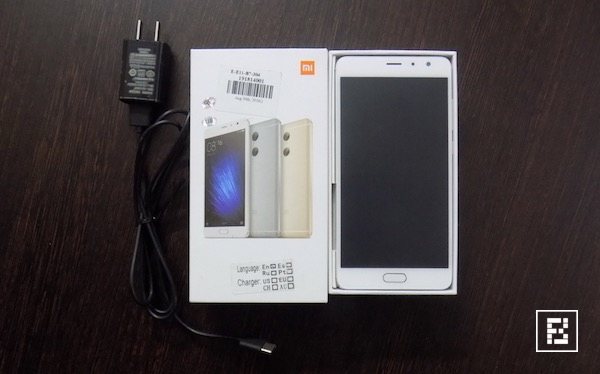
The Redmi Pro package comes with a USB Type-C cable and charger. Unlike the latest turbo chargers being rolled out by companies like Samsung and Motorola, this isn’t a powerful charger. There are some manuals and warranty cards inside, along with a SIM tray ejector that you need to keep safe for future use. Sadly, the package doesn’t include any headset.
Xiaomi Redmi Pro — Design and build
Xiaomi Redmi Pro measures 151.5 x 76.2 x 8.2mm and weighs 175g. It’s a well-designed smartphone with a brushed metal back that makes it smudge resistant. The phone’s weight feels good in hands just like a premium phone. While the back is reminiscent of HTC One devices, the positioning of dual camera acts as a differentiator. The back edges are a little curved which contribute to the good ergonomics.
On the front, the ceramic home button, which is flush with the glass, sits at the bottom with a fair amount of bezel all around. The same home button also features a fingerprint scanner. The phone’s screen measures 5.5-inch–the screen size which added the Note or phablet tag to the phones a couple of years ago. Today, 5.5-inch is the new normal. The overall look of the front panel is clean, avoiding any unnecessary fuss.
Here’s the picture from different angles:
The top of the phone features the familiar 5.5mm headphone jack. Hey there Apple; it isn’t some rocket science. There’s also an IR blaster, something that we rarely see in smartphones these days. The bottom side features a reversible USB-C charging port, which is surrounded by a mono speaker whose grill disguises itself to look like twin speakers.
The review unit we received faced some weird issue as the back button stopped working after a couple of days of testing. However, it came back to normal after a couple of reboots.
Display
Redmi Pro is the first Xiaomi device that features a 100% of NTSC color gamut OLED-screen. In OLED screens, each pixel is illuminated independently, so black becomes blacker and colors more vivid. At this price range, an OLED screen in Redmi Pro comes as a pleasant surprise. On this device, the colors look deep and bright. In display settings, there’s an option to set the colors to Warm, Standard, and Cool. You can also set the contrast level to Increased, something that I won’t recommend. It’ll brighten up the colors but they looked kind of fake.
Overall, looking the price range, the display of Redmi Pro is exceptional. Apart from crushing its competitors, sometimes, it manages to challenge few displays in upper range as well.
Camera
Xiaomi is a brand that’s known for delivering value for money performance. The same notion could be easily associated with the camera software and its performance. The camera app launches instantly as soon as one clicks on the app icon. The app can also be launched by left swipe on the lock screen.

If instantly try to capture the picture, you won’t have to wait much. However, sometimes, the fast speed comes at the cost of out-of-focus pictures. If you take the picture with a little patience, the results match the performance of other 13MP sensors of modern smartphones. The zooming aspect of the lens is pretty good and you get good detailing in the picture. The 5MP selfie sensor too performs a good job, but certainly it’s not among the best players in the market.

Redmi Pro comes with a dual camera that grants it a stereo photo mode. The secondary rear 5MP sensor uses depth information and the primary 13MP sensor is used for taking the real picture. With their combination, Redmi Pro generates a 13MP resolution shot with a depth of field filter (see the picture below). This feature showed good results while taking close up shot of an object, blurring the background. However, in some instances where lenses get kind of “confused”, the shots don’t give satisfaction. The video recording quality is impressive and the optic image stabilization, which you need to enable in the settings, offers great results. But, the stereo mode in video mode doesn’t result into something amazing.
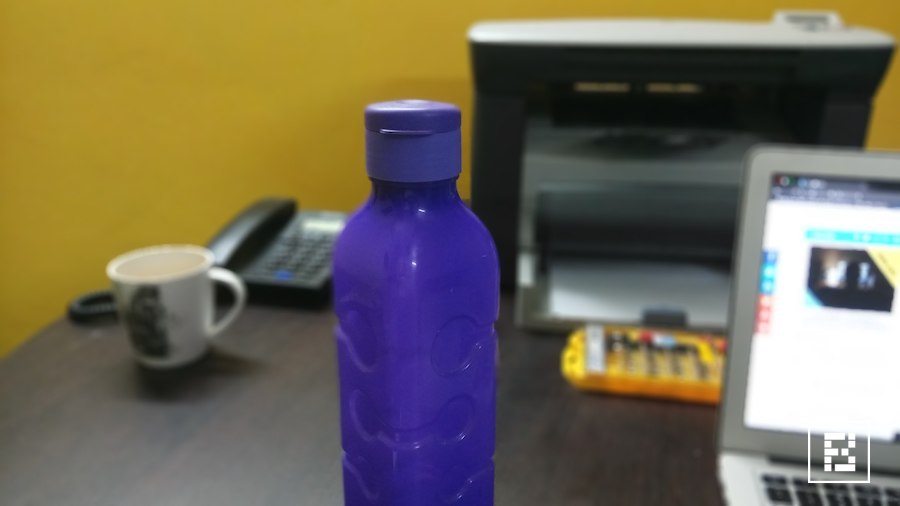
If you take a look at Redmi Pro’s $250-$300 competitors, the photo and video performance of this device outshines. We also felt some heating issues after using camera for some time. Overall, it features an impressive smartphone camera that takes detailed pictures in good light.
Connectivity
Redmi Pro comes with 2G and 3G connectivity around the globe. However, the 4G LTE connectivity is limited to few countries. For inserting the SIM card, you get a hybrid solution, something that’s common in Xiaomi smartphones. This lets you use one nanoSIM in one slot and microSIM or a microSD card in the other. The Wi-Fi connectivity supports the 802.11n standard. Sadly, your 5GHz router won’t be able to help you experience a faster internet on your phone.
Redmi Pro comes with other connectivity options like Bluetooth 4.2, GPS, GLONASS, Beidou, and USB Type-C port.
The IR blaster will let you control the IR-controlled devices at your home. The phone comes with MiRemote app that supports long list of devices. I tried to control the Philips TV at my office using the phone and it worked fine after a little tuning.
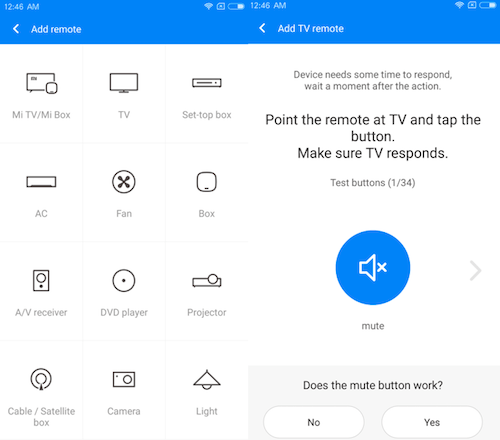
Sound
Xiaomi devices are known for their sound quality. Redmi Pro tries hard to follow the tradition and offers a balanced audio at lower audio levels. The overall sound quality of the speakers is decent, but you won’t feel any bass. Sadly, when you take the slider to the top, the audio distorts and fails to impress.
Battery Life
Redmi Pro comes with a 4,050mAh battery. In my tests, the battery performance was satisfactory. The phone comes with the Helio X20 deca-core processor whose tri-cluster design optimizes the power consumption. MediaTek has prepared these chips with an aim to reduce power consumption. And, Xiaomi decided to go with Helio as the combination of an OLED display and Snapdragon chip would consume extra juice.
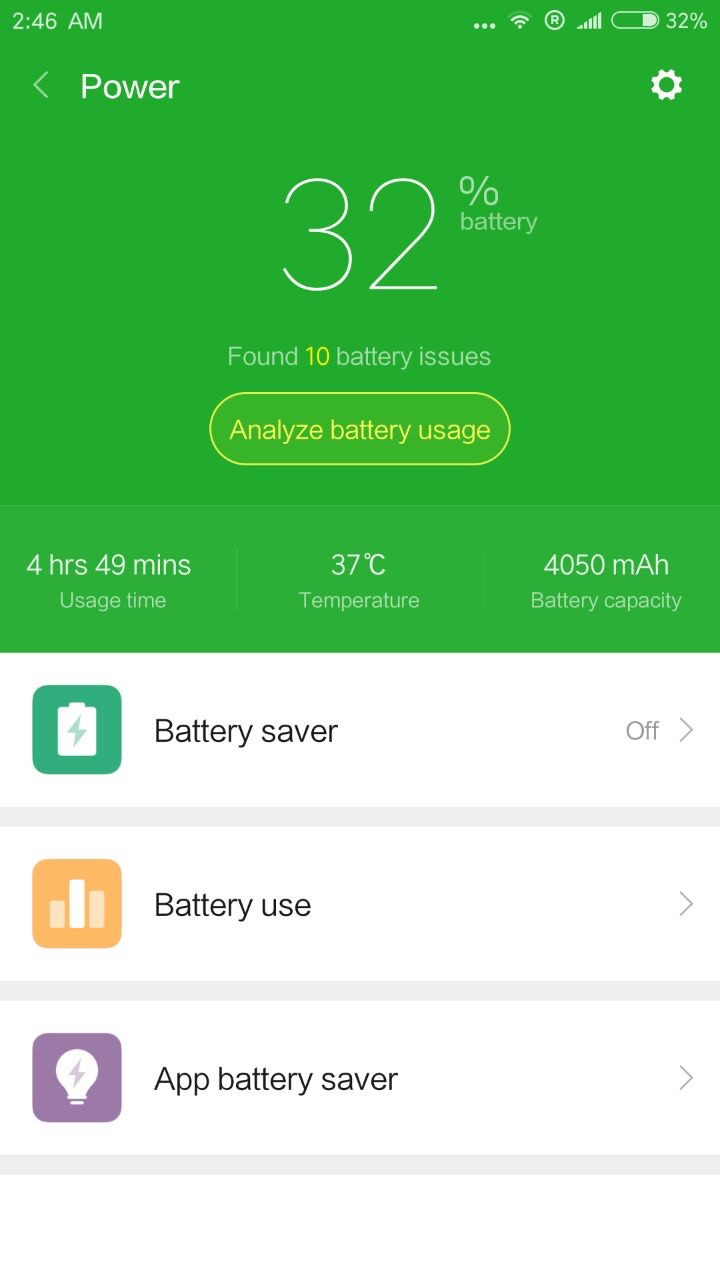 In our tests, the battery was fully charged in about 2 hours 30 minutes. The full-charged battery had still some juice left after moderate usage throughout the day.
In our tests, the battery was fully charged in about 2 hours 30 minutes. The full-charged battery had still some juice left after moderate usage throughout the day.
Xiaomi has also baked in a confusing battery saver mode that closes the apps once they move to the background. While this process saves battery by stopping data services of the apps, it deteriorates the user experience.
Software — MIUI 8
Our review unit came with MIUI 7 preinstalled. But, the phone prompted me to update it as soon as it was connected to Wi-Fi. The MIUI 8, which is based on Android 6.0, upgrade process completed in about 15-20 minutes.
The software update comes with better visual features, updated applications, and better user experience. One of the major highlights of MIUI 8 is the dual apps feature that lets you run two instances of an app like WhatsApp, Instagram, etc. for each SIM. It also lets you take scrolling screenshots and a better file transfer option.
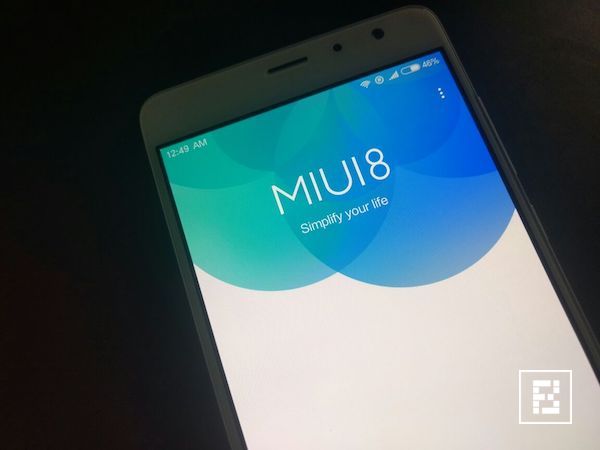
Overall, MIUI 8 is pretty snappy and features lots of customization options. Xiaomi has focused on giving you a better control over your device and you can access a dedicated Security app right from the home screen. Apart from the Dual Apps, there’s an option to add Second Space that lets you create another user profile.
The bootloader of the device is locked and you need to request Xiaomi if you wish to install a new ROM.
Benchmark:
Our review unit is a Xiaomi Redmi Pro High Edition model that features a MediaTek Helio X25 processor. The CPU clocks at 2.3GHz. The performance of the phone while playing games and multitasking is a pleasant experience. However, we faced a frequent heating issue while operating phone’s camera.
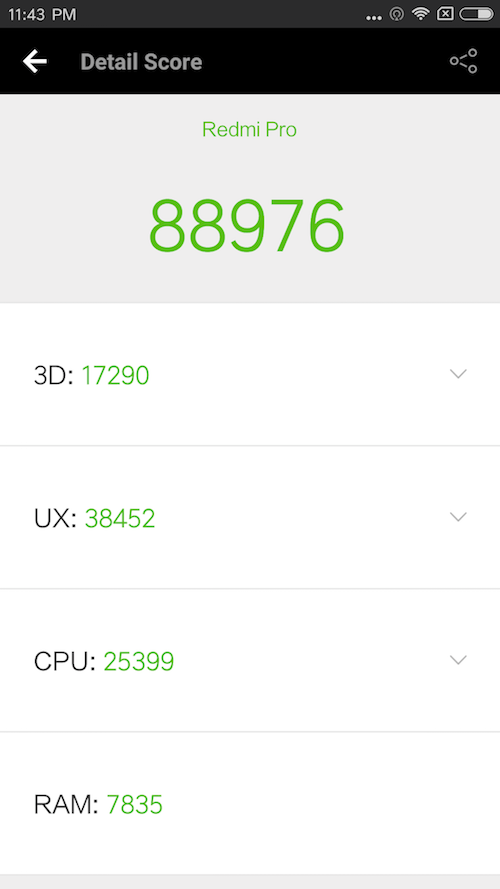
Here’s the result of AnTuTu benchmark that measures performance, RAM, and GPU power. It manages to outperform Xiaomi Mi Max, LG V10, and others:

Performance pros and cons:
Xiaomi is known to offer value for money experience and Redmi Pro tries hard to prove that right. Despite featuring a familiar design, overall build and design of the phone is solid and gives a premium feel. The OLED screen of the phone is the highlight feature that destroys its competition. Xiaomi has added an extra camera to provide a depth-of-field effect with stereo effect. While the normal picture quality of the camera is great, the stereo effect doesn’t seem much polished. MIUI 8 has also brought a fresh feel to the device. The phone has loud speakers but nothing out of this world. The battery is powerful but Xiaomi’s strange power saver mode affects the user experience.
The users must note that Xiaomi Redmi Pro is currently only available in China. So, if you are importing the phone, be ready to install Google Play Store and get rid of the inbuilt Chinese-language apps. The after-sales support is another important point that must be kept in mind before buying this phone.
You can grab Xiaomi Redmi Pro from Gearbest at attractive prices.
Did you find this article helpful? Don’t forget to drop your feedback in the comments section below.


